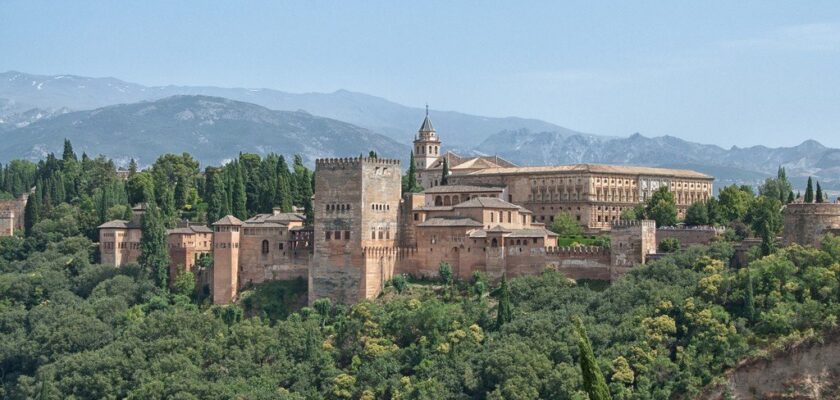Alhambra Palace
The majestic impregnable Alhambra looks down on the Andalusian city of Granada from the top of the mountain. The Alhambra Palace is the oldest and most prominent monument of Arab rule in the Iberian peninsula.
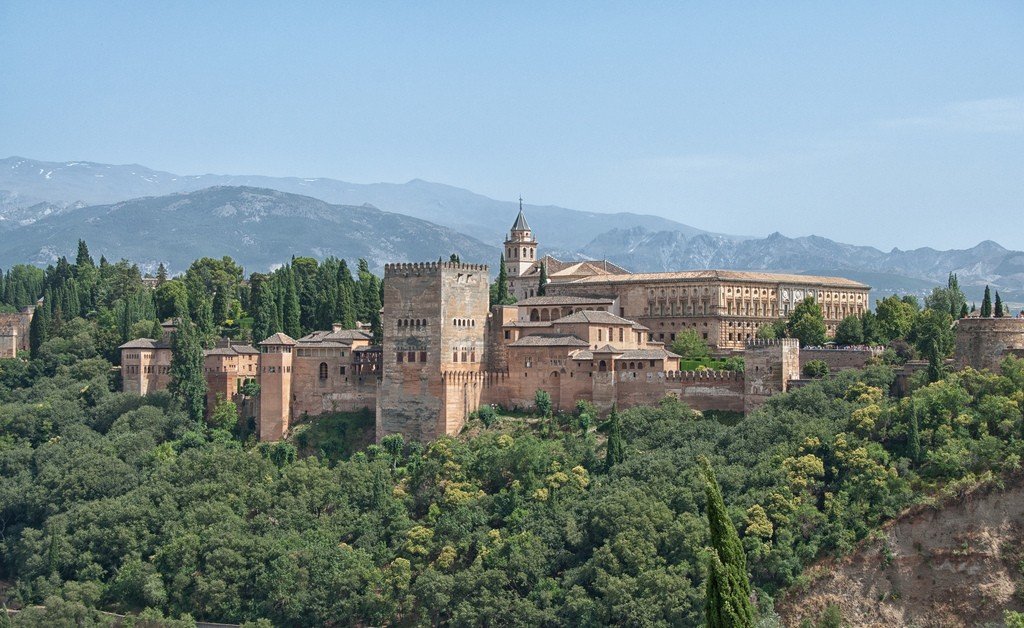
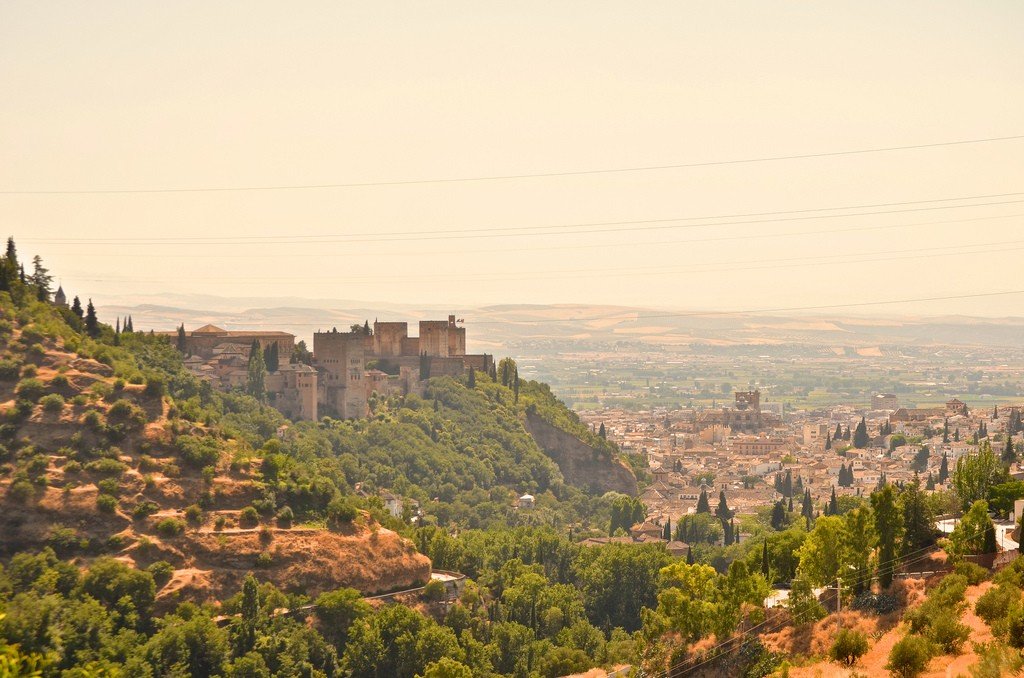
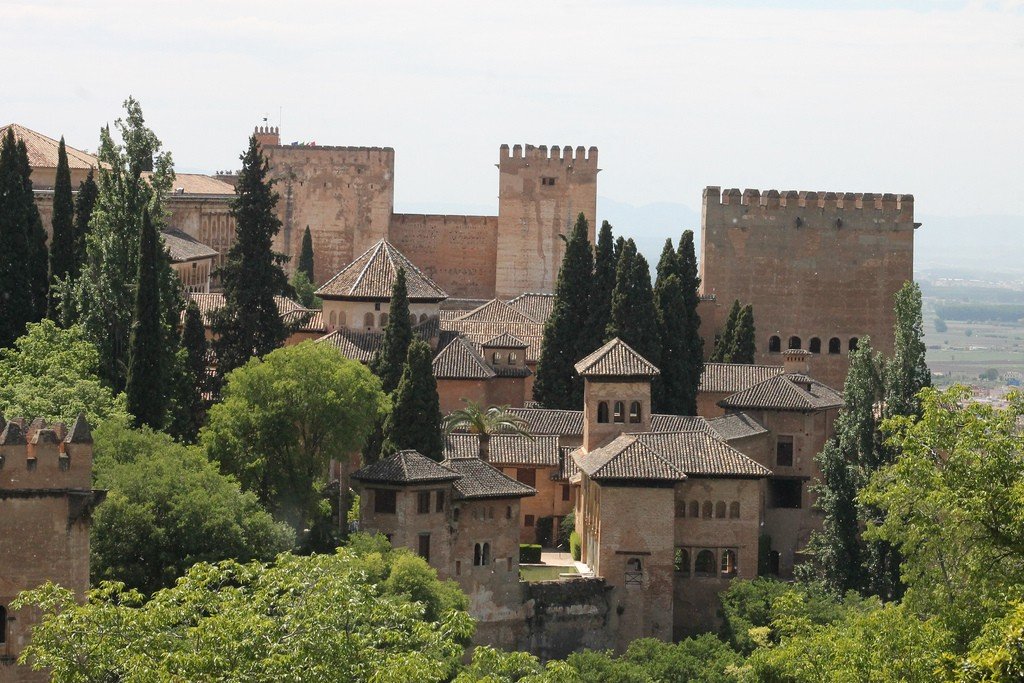
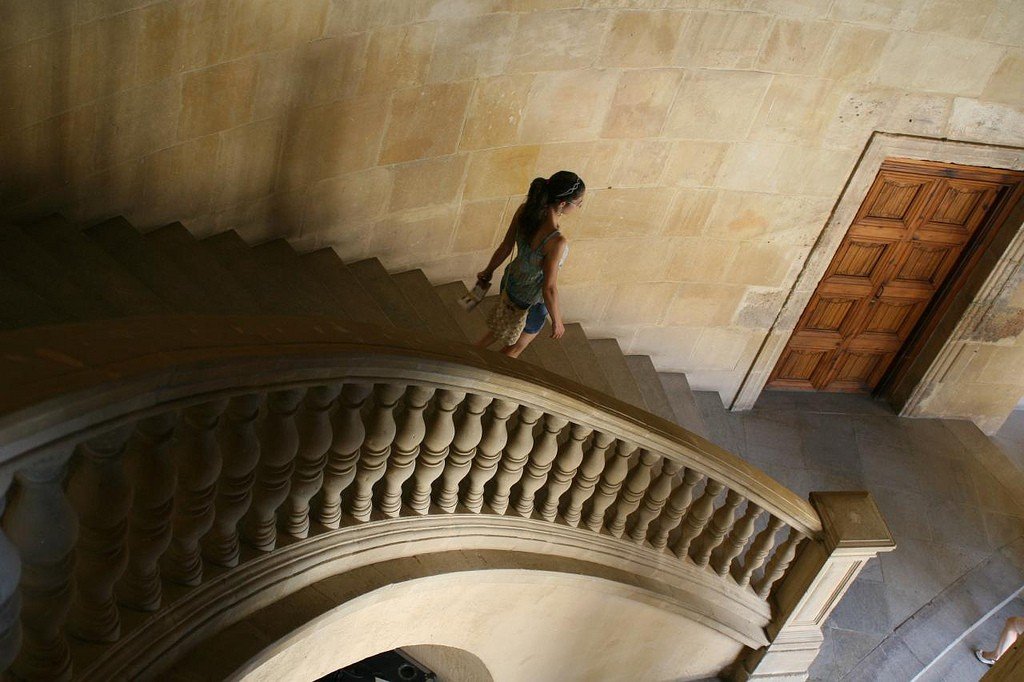
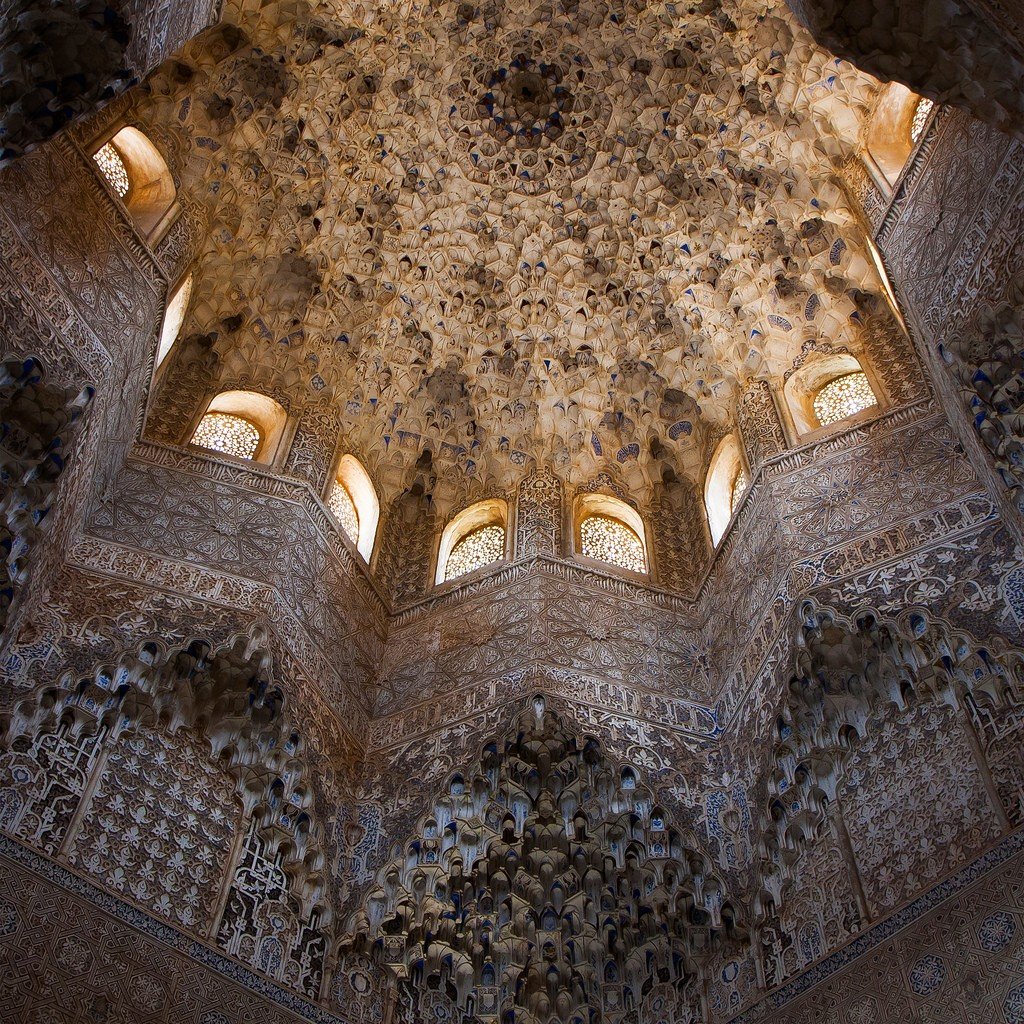
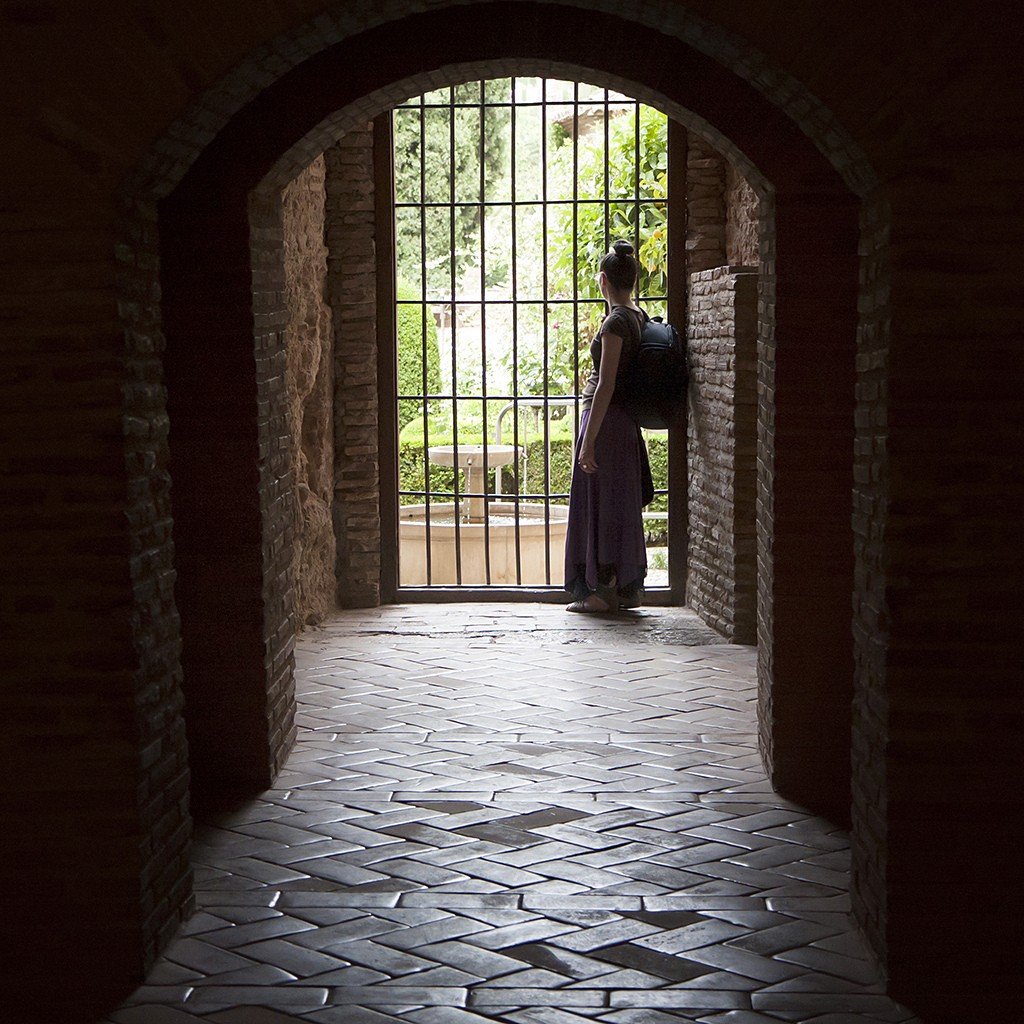
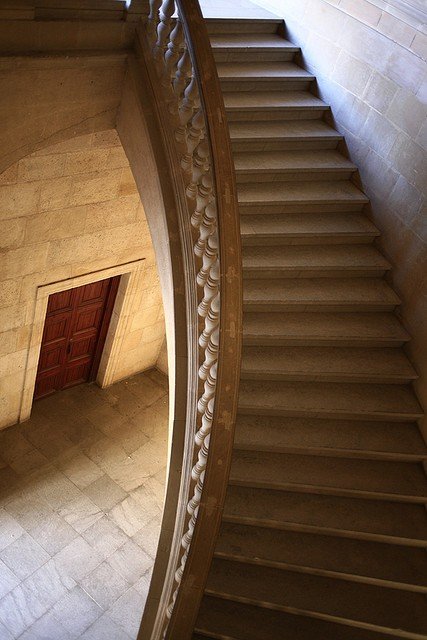
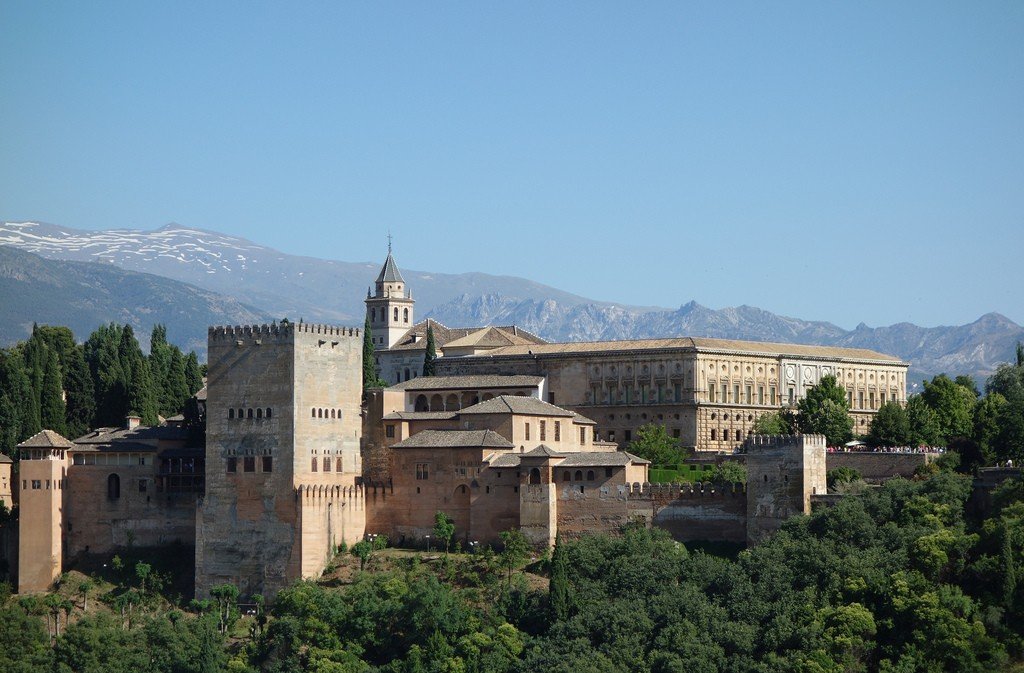
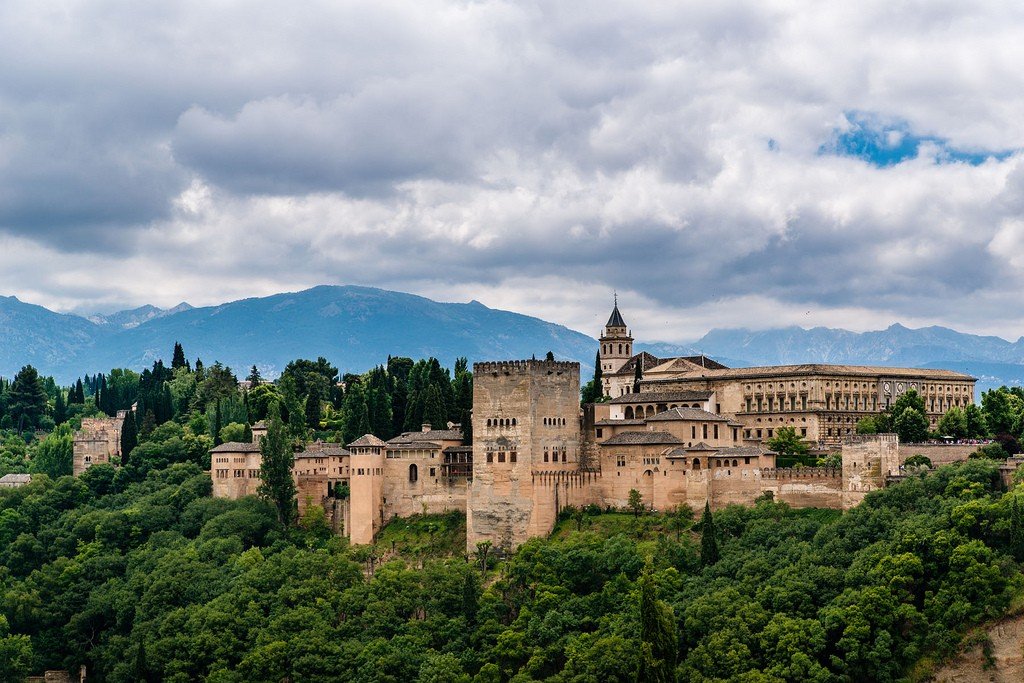
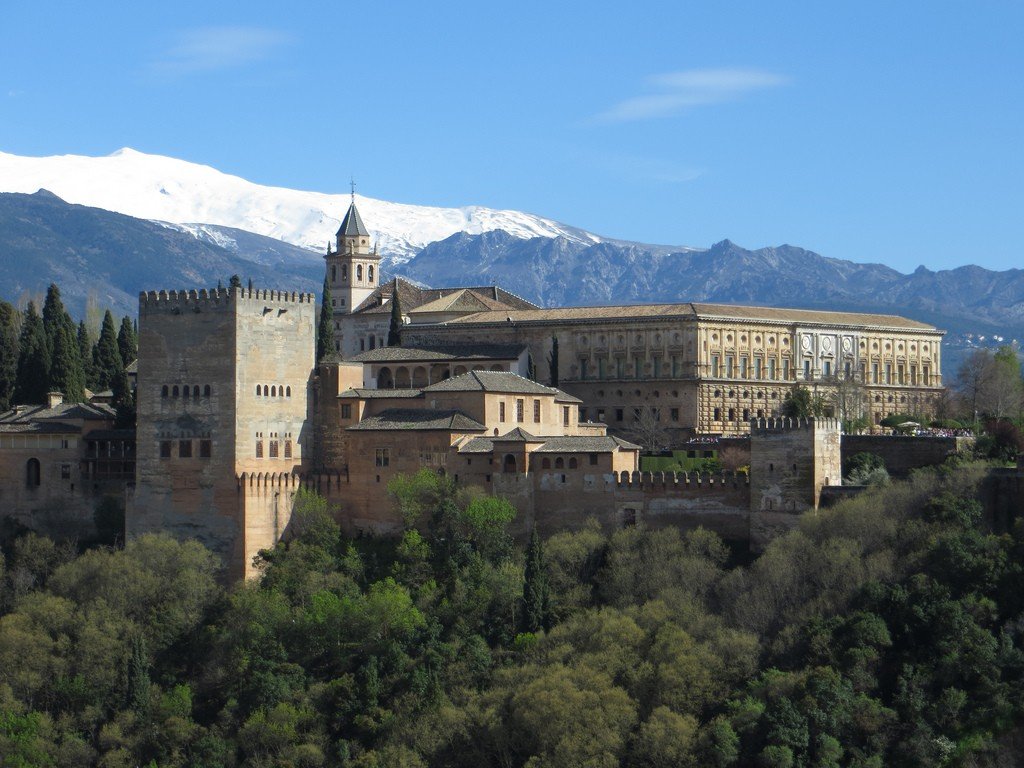
General information
The Alhambra Palace is the finest fortified palace chambers ever built. Its structure preserves the features of a classical medieval castle, in which the upper floors were occupied by aristocrats, military and noble townspeople, while the lower levels and the walled courtyard were given to merchants and servants. In 1241, Ibn al-Ahmed founded the Nasrid dynasty in Granada, calling himself Mohammed I. The Nasrids ruled Granada until 1492. The Alhambra citadel was built on the orders of Mohammed I.
.
In early 1492, the end of seven hundred years of Moorish rule came. Spanish Christian kings expelled from Granada the rulers of the Nasrid dynasty, who had considered the city and its environs their possessions for 250 years. The Nasrids fled their palace, the incomparable Alhambra. This “red city” should actually be seen as an outstanding architectural ensemble rather than as a single building.
.
The first part of the huge fortified complex, the Alcazaba (Upper City), was completed either in the late 13th or early 14th century.
The Mehuar, or House of Justice, including the richly decorated Quarto Dorado (Golden Room), were the official quarters of the Sultan himself. Here he announced laws and decrees in the presence of officials. On the walls of the Golden Room was the inscription, “Enter and do not be afraid to demand justice, you will get it.”
.
The Comares Palace, which housed the residential apartments of the Sultan and his officials, is a real gem of the Alhambra. The vaults of the Embassy Hall, according to the Koran, represent the seven heavens. They are made of cedar with skillful inlays of ivory and mother-of-pearl. The personal guard of Sultan Mohammed V (1354-1391) occupied the Lion Court, an outstanding example of Arabic architecture in Iberia and Islamic style in general. The walls are ornamented with scarlet, green, gold and blue tiles. The inner courtyard with 124 marble columns is named after the fountain. Its bowl is held on the backs of 12 marble lions.
.The hall of the Two Sisters (Sala de las Dos Hermanas) is considered the most luxurious room of the palace. Its Moorish-style vaults are decorated with stalactites, so that the ceiling is divided into more than 4,000 sparkling cells. One wall is covered with poems painted in gold on the glaze.
The sound of water can be heard in every corner of the Alhambra. Within the walls of the citadel, many springs gush forth. Sultan Mohammed I decided that in his fortress of water will be in abundance. And the obedient architects made water a detail of the interior decoration. The filigree jets of the fountains blend perfectly with the shine of the glazed bricks, marble floors and colorful tiles.
.The Alhambra consists of four parts:
.- The Alcazaba Military Fortress (the oldest part)
- The stunning Nasrid Palace (the last burst of Moorish architecture);
- The Summer Palace of the Generalife;
- Renaissance Palace of Charles V.
Between them runs a labyrinth of paradise gardens that truly seem like the embodiment of heavenly bush. The delicate combinations of light, color, sounds and scents created by the gurgling fountains, the mirror-like smoothness of the ponds, the tall hedges and the abundance of fragrant flowers are captivating.
.The color of the walls, made of a mixture of red clay and stone, gave the Alhambra its name, derived from the Arabic word for “red”. These walls once surrounded a small city with four gates, 23 towers, seven palaces, servants’ quarters, workshops, baths, educational institutions (madrasas) and mosques. Many of them have long disappeared, but those that remain continue to mesmerize with their magic, as it happened with Charles V: having built an imperial palace here, the monarch used it only for ceremonies, and preferred to live with his family in a more pleasant Moorish palace. Due to the immense popularity of the Alhambra, in high season you may find yourself in a dense crowd of many tour groups. So it’s best to schedule a second visit, and come again in the evening, when the architectural elements you may have missed during the day are softly illuminated. As for the Nasrid Palace, it is necessary to book a tour and wait for half an hour (try to come after 12.00, when the crowds will subside). But either way, you can soak up the sensual atmosphere of the Alhambra for as long as you want.
. Contents
Alcazaba
This fortress is a good place to start your tour. Climb to the roof of the Torre de la Vela for a fantastic panorama of Granada, the Sierra Nevada and the vast plain (vega) to the west. The Alcazaba, built in the 9th century, represented the first major Moorish structure in Granada, although its two front towers did not appear until 400 years later.
.Palacios Nasaríes (Nasrid Palace)
French poet Théophile Gautier called this palace, built for Yusuf I and Mohammed V in 1300, an earthly paradise. Its two patios, exquisitely carved ceiling moldings, friezes, capitals and arches, geometric mosaics, fountains and a sense of infinite perspective epitomized the heyday of the Moorish style in Spain. From the wonderfully tiled Mejuar (Council Hall), make your way to the Patio del Cuarto Dorado and then to the stunning Salón de los Embajadores (Hall of Ambassadors) in the Comares Tower. This structure is topped by a domed vault, which is said to have taken more than 8,000 cedar wood tiles. Notice the masterful stucco walls, the beautiful muarcas (lattice moldings of the ceiling, arches and domes), and then admire the marvelous view from the windows. The Patio de los Arraijanes (Myrtle Court) offers one of the best perspectives of the Alhambra, emphasized by the myrtle bushes on the sides of the reservoir.
.
From here leads the passage to the Hall of the Mosarabs, preceded by the famous Lion Court. This rhythmically organized, colonnaded space is divided into four parts in the traditional Islamic spirit, dominated by a fountain and water channels, symbols of the four streams of life. The pool, whose rim is inscribed with poetic stanzas celebrating the beauty of the courtyard, the garden and the play of waters, is guarded by 12 stone lions. The author of these and many other inscriptions in the Alhambra was Mohammed V’s chief minister, ibn Samrak.
.
Surrounding the patio are three halls of exceptional beauty. The most impressive is the Sala de las Dos Hermanas (Hall of the Two Sisters, on the left as you enter the patio), with an octagonal domed ceiling decorated with remarkable mucarnas resembling stalactites. They are flooded with natural light pouring in through the windows below.
On the opposite side, this hall is connected by a water channel to the Hall of the Abenserrahs. It has a high domed ceiling and stalactite vaults. The third hall, the Sala de los Reyes (Hall of Kings), is behind a cluster of arches. Its ceiling is painted by Christian artists hired by Mohammed V. North of here, another hall leads to the Mirador de Daraja over a beautiful courtyard with a garden..
From the main palace, one can walk to the Palacio del Partal, which was probably the first part of the structure. An arched gallery leads to the Torre de las Damas (Tower of the Ladies), which is reflected in the mirror-like clarity of the large pool. The gardens located further away at different levels create a bridge leading to the Generalife.
.Generalife
The Generalife building, erected above the Alhambra level, was a summer palace. Its main attraction is an oblong pool surrounded by fountains in the Patio de la Acequia; there are also terraced gardens, pavilions, and cypress groves that give a healing coolness even in the heat of summer.
There’s not much to see in the former royal apartments other than the wonderful views, so visit the Mirador de la Sultana observation deck at the top.
.In late June, music and dance performances are held in the Generalife Gardens.
.Charles V Palace
The Palace of Charles V was designed by Pedro Machuca, a student of Michelangelo. The vast circular courtyard represents the World Empire (i.e. the globe) and is quite unlike any other structure in the Alhambra. Inside are the Museum of Fine Arts and the Alhambra Museum. The latter displays examples of Spanish-Muslim art. Upstairs, in the Fine Arts section, are works by Granada masters (Diego de Siloe, Alonso Cano, Pedro de Mena, Diego and José de Mora).
.